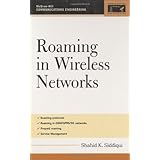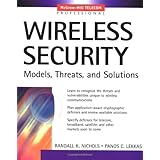
Average Reviews:

(More customer reviews)Peter and Barry have documented tons of good information on wireless networks in this book. From Wi-Fi to Bluetooth to site surveys to security and even throwing in great reference material on RF, wireless standards, and more. Even after working with 802.11 wireless networks for several years, I've learned a good bit from this book in a very short time. I especially like the neat wireless tools and other wireless Internet resources they present. Just like most of the other For Dummies books, Wireless Networks For Dummies is practical, real-world, and more than enough to get started. I challenge anyone to find a more comprehensive book on this hot topic.
Click Here to see more reviews about: Wireless Networks For Dummies
You've probably heard the expression, "It's time to cut the cord." Well, it may be time to "cut the cables" at your office and free yourself from your desk and computer. Wireless networks are the waves of the future—literally. Wireless Networks For Dummies guides you from design through implementation to ongoing protection of your system and your information so you can:
Remain connected to the office in airports and hotels
Access the Internet and other network resources in the lunchroom, conference room, or anywhere there's an access point
Use your PDA or laptop to query your database from the warehouse or the boardroom
Check e-mail wirelessly when you're on the road
Get rid of the cable clutter in your office
Wireless Networks For Dummies was coauthored by Barry D. Lewis, CISSP, and Peter T. Davis, who also coauthored Computer Security For Dummies. Barry Lewis is president of an information security consulting firm and an internationally known leader of security seminars. Peter Davis is founder of a firm specializing in the security, audit, and control of information. Together, they cut through the cables, clutter, and confusion and help you:
Get off to a quick start and get mobile with IrDA (Infrared Data Association) and Bluetooth
Perform a site survey and select the right standard, mode, access point, channel and antenna
Check online to verify degree of interoperability of devices from various vendors
Install clients and set up roaming
Combat security threats such as war driving, jamming, hijacking, and man-in-the-middle attacks
Implement security and controls such as MAC (Media Access Control) and protocol filtering, WEP (Wireless Equivalent Privacy), WPA, (Wi-Fi Protected Access), EAP (Extensible Authentication Protocol), and VPN (Virtual Private Network)
Set up multiple access points to form a larger wireless network
Complete with suggestions of places to get connected, Web sites where you can get more information, tools you can use to monitor and improve security, and more, Wireless Networks For Dummies helps you pull the plug and go wireless!
Click here for more information about Wireless Networks For Dummies



















